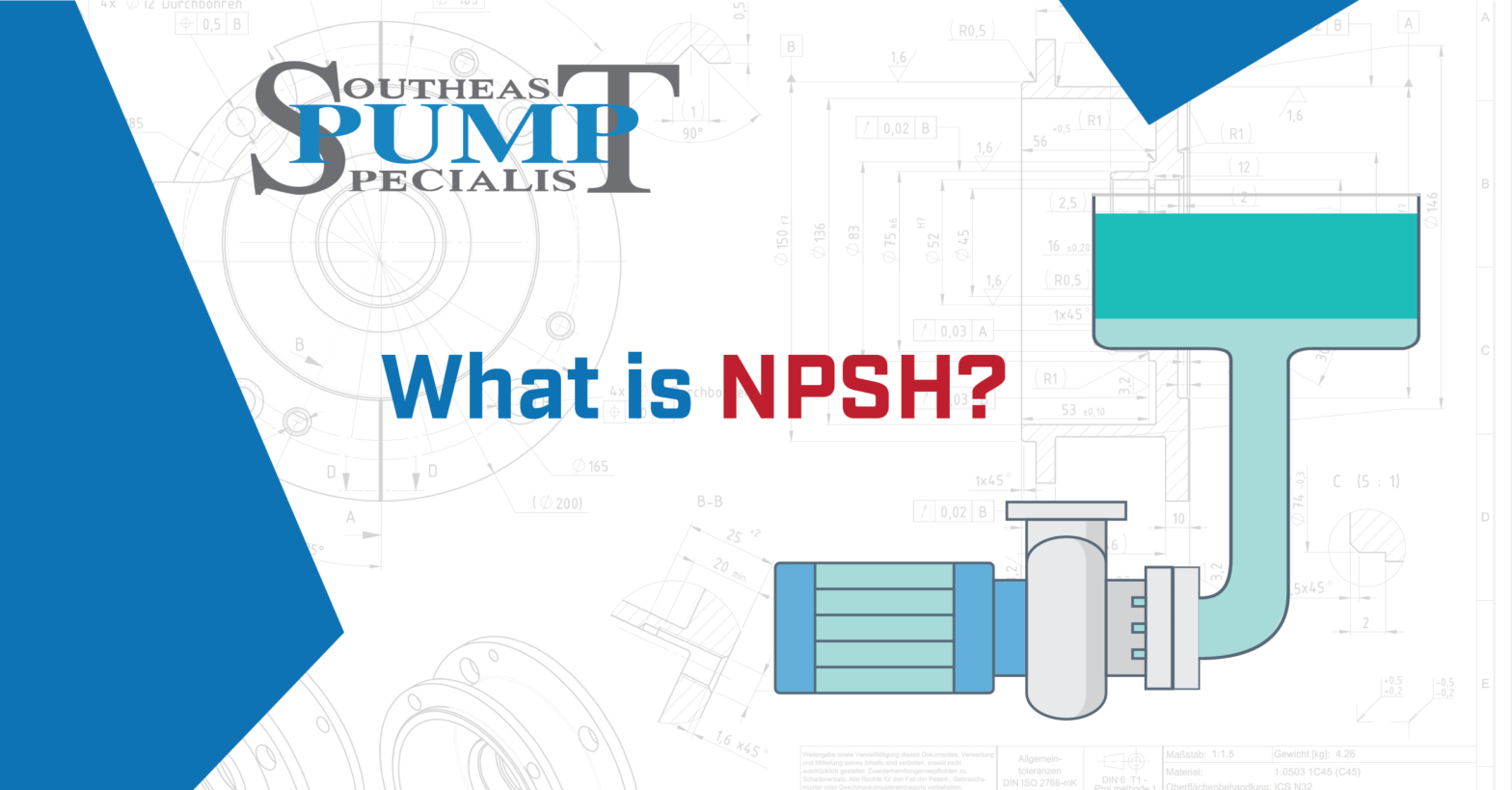Net positive suction head (NPSH) is a measure of the suction-side pressure at the pump inlet, relative to the vapor pressure of the liquid being pumped. It is an important parameter for the proper operation of centrifugal pumps, as it determines the suction conditions that the pump must operate under. These parameters can be found in the pump curve from manufacturer. To learn about pump curves, see our post about How to Read a Pump Curve.
The NPSH of a pump is the difference between the absolute pressure at the inlet of the pump and the vapor pressure of the liquid being pumped. It is usually expressed in feet or meters of head. The NPSH required (NPSHr) is the minimum NPSH that the pump must have at the inlet in order to operate without cavitation. Cavitation is a phenomenon that occurs when the pump inlet pressure drops below the vapor pressure of the liquid, causing bubbles to form in the liquid. These bubbles can then collapse when they reach higher pressure regions within the pump, causing damage to the impeller and other components.

To ensure that a pump operates without cavitation, the NPSH available (NPSHa) at the pump inlet must be greater than the NPSH required. The NPSHa is the difference between the suction-side pressure at the pump inlet and the vapor pressure of the liquid, and it is influenced by factors such as the elevation of the pump, the height of the liquid in the suction tank or sump, and the frictional losses in the suction piping.
In industrial pumps, it is important to carefully consider the NPSH requirements of the pump and the NPSHa at the inlet in order to ensure that the pump operates efficiently and reliably.
Do you need help selecting a pump that will operate without cavitating? Our pump experts have the knowledge and experience to help you select the proper pumps and make system adjustments to provide exceptional pump performance. Contact us to get started.
Need Pump Experts On Site?
We have NCCER certified millwrights ready to come on site and inspect, install, repair, and perform routine maintenance on all your rotating equipment.





